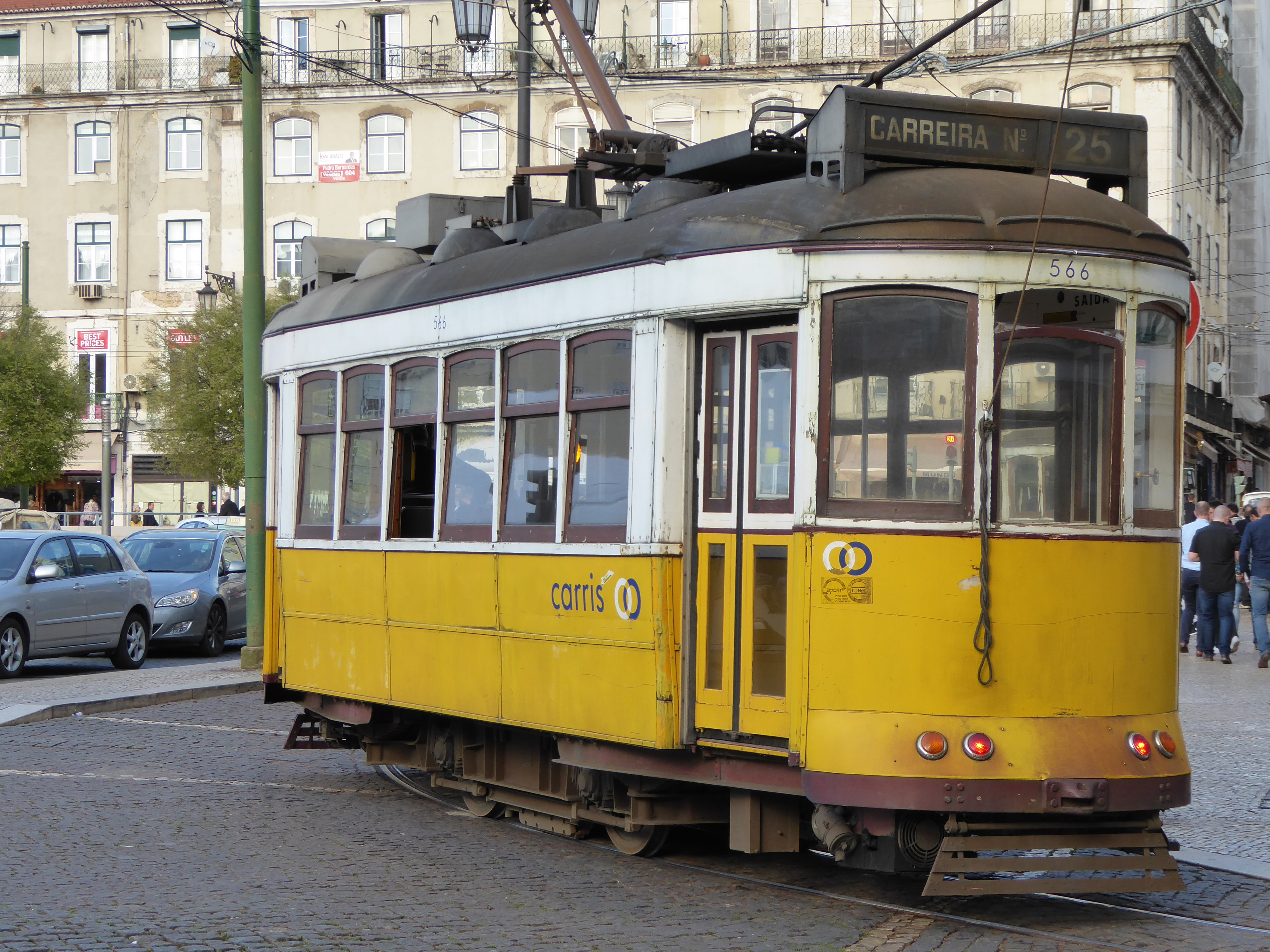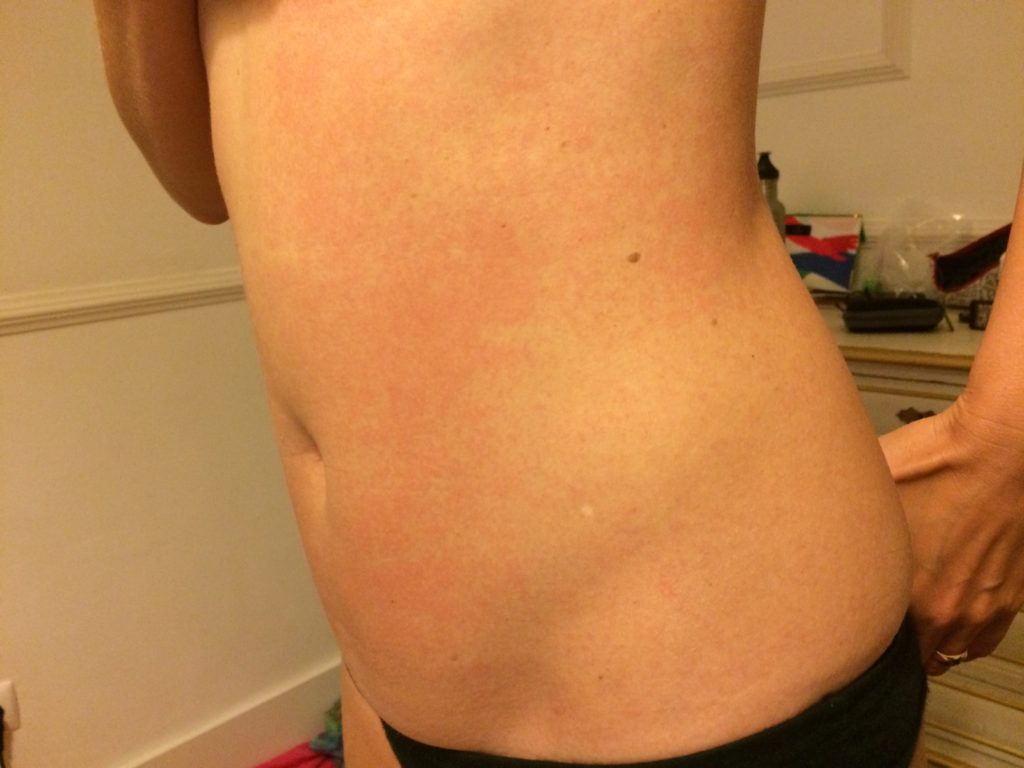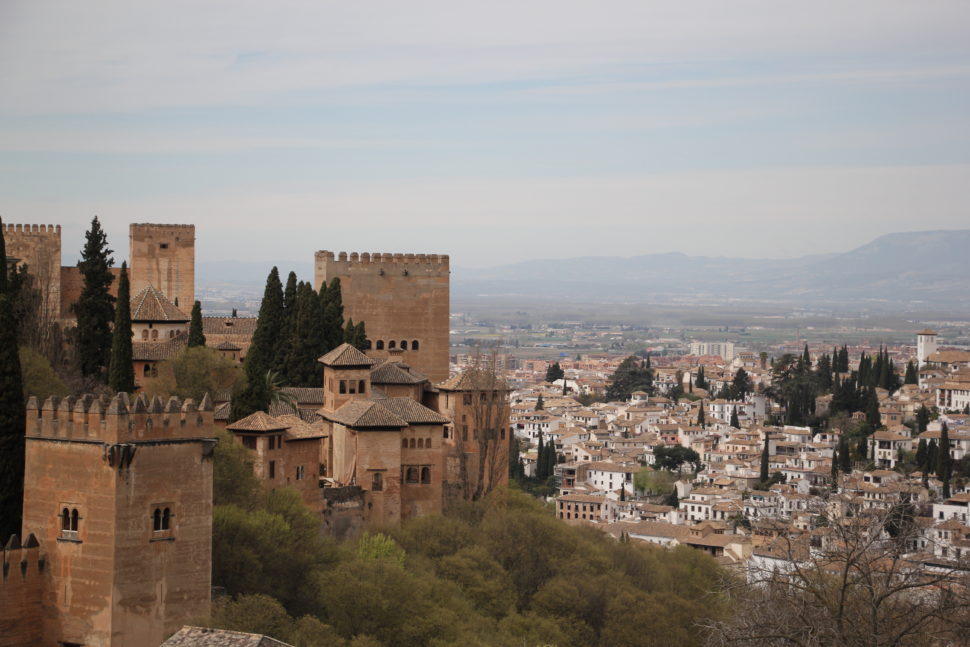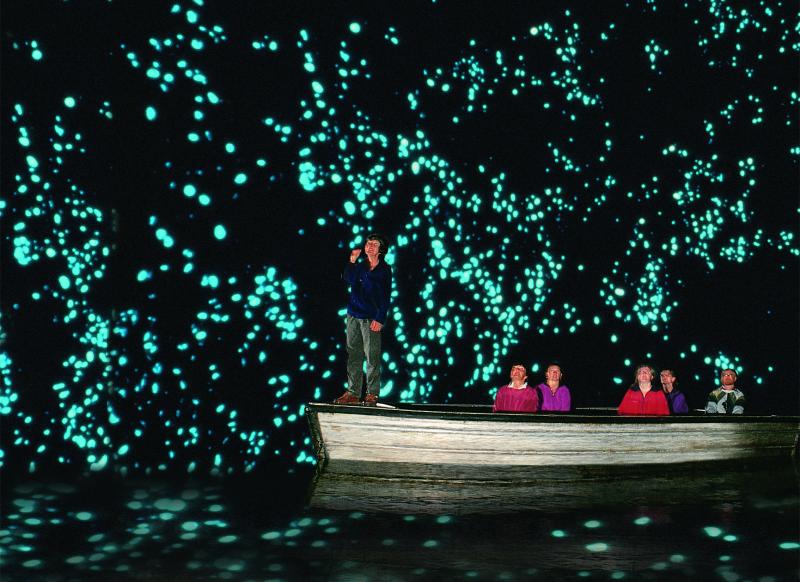Leaving behind Marrakesh and its wonderful Mint tea, we got our fist taste of Portugal. Sitting and waiting for a short 1 hour flight that for some reason took 5 hours to depart. While Marakesh was moderate with its temperature the Airpot waiting area was akin to Antarctica.
Finally we arrived in darkness. So much for spending the afternoon checking out our surroundings. Lisbon was to play host for the next 5 nights.
Lisbon is Portugal’s hilly, coastal capital city. From imposing São Jorge Castle, the view encompasses the old city’s pastel-colored buildings, Tagus Estuary and Ponte 25 de Abril suspension bridge.
Elena once again served up a great place to stay Travellers House Hostel is right in the heart of the city and located on Lisbon’s famous walking street “Rua Augusta”. From here it’s a quick walk to the water and discover Terreiro Do Paço. Constructed following a 1755 earthquake, this big waterfront plaza is flanked by colonnades & cafes.
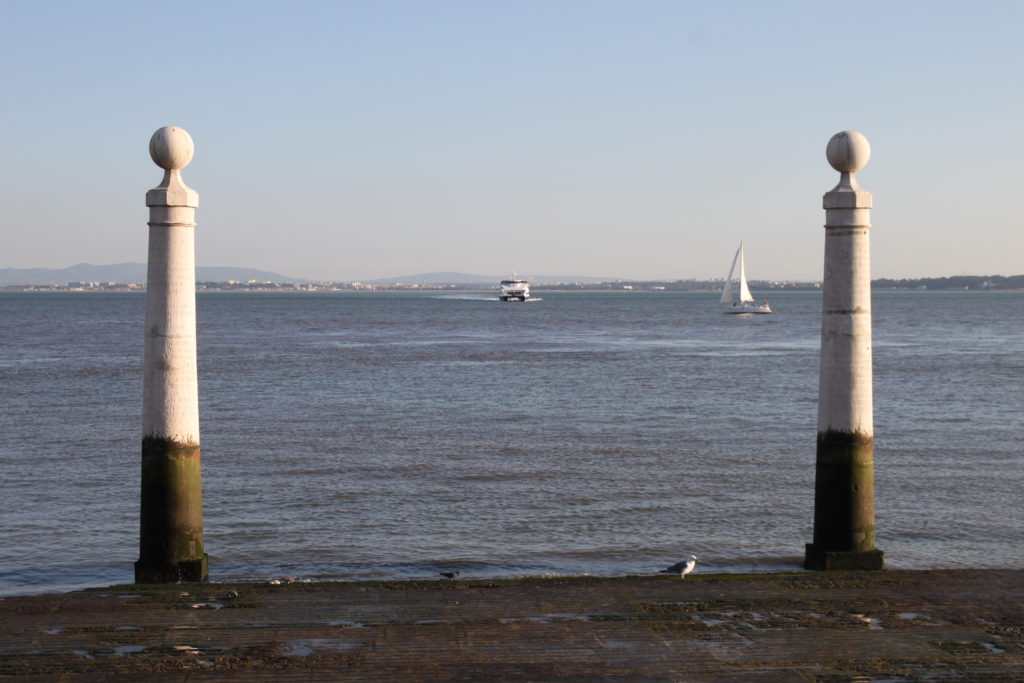
Greeted warmly at the hostel we were asked if we wanted to join in the evenings activities. Elena declined as all the cold air in Marrakesh elevated the flu symptoms and she crawled into bed. So what was I to do? The activity started at 10pm and was a wine tasting of local Portuguese wines….. Yup count me in! The great thing was that the whole event was happening in the lounge of the hostel so all I had to do was climb the stairs once the festivities ended.
Now there are some rules when wine tasting in Portugal. You start on Pink, move on to bended greens, light reds and then heavy and fortified reds….. and then…. there’s port. Now when we said wine tasting you conjure up thoughts of smelling sipping and spitting out the wine in a little bucket, right? Did I say we were in France? No, this is Portugal…. So it’s more like wine drinking, and with the ever increasing quantity combined with mixing drinks the night went from a simple wine tasting event to a “lets consume everything on the table”. All in all, not a bad effort, 12 people and 21 bottles consumed and 2 bottles of port. Needless to say the following day I was the last one up for breakfast.
Being in a slightly delicate situation and with Elena suffering from the flu we looked a right pair. Seriously though, Elena had taken a turn for the worse overnight and we really needed her to see a doctor. She was throwing up and had a high temperature. Talking to reception we managed to get an address of an international hospital, however it was faster to go to the local emergency of a hospital just up the road. Thankfully we found an english speaking nurse who guided us through the whole process. All the time she was apologizing as we had to be charged international hospital rates. (hospitals are free in Portugal).
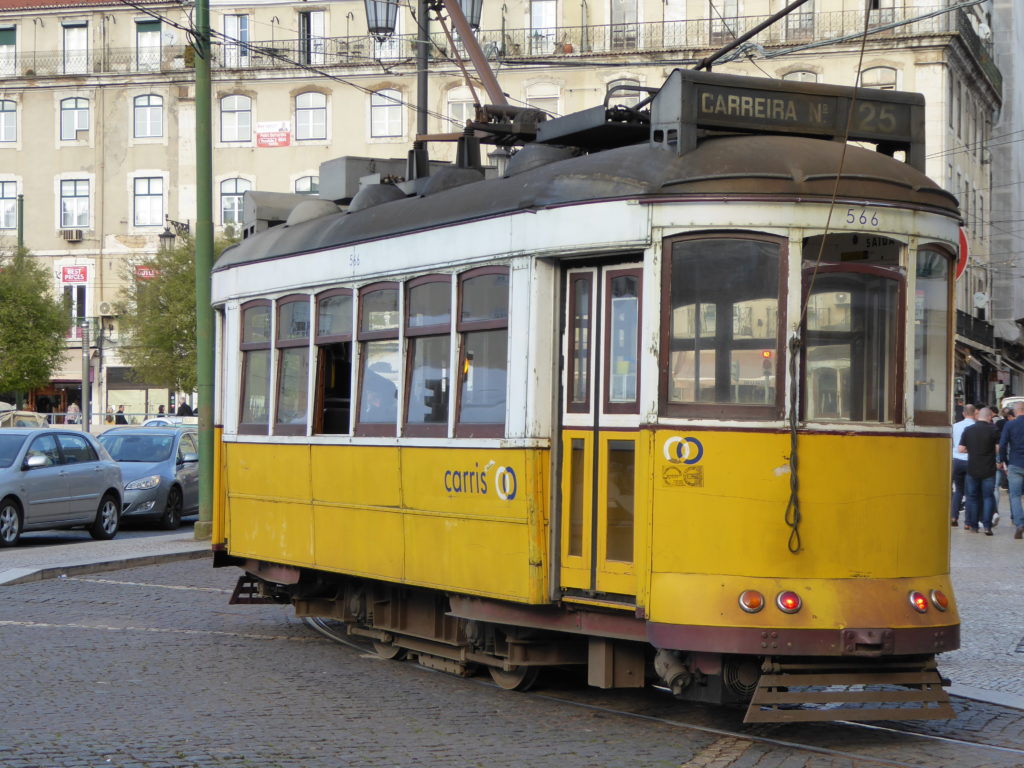
Getting around Lisbon is quite simple. The old Trolly busses are iconic and adorn the t-shirts and other trinkets in the many tourist souvenir shops through out the city centre.
Walking”Rua Augusta” to Terreiro Do Paço Plaza we found the Trolly Bus service that offers the typical tourist route for sightseeing. Make sure you grab a set of headphones and plug in to get the commentary. Because we bought the “premium package” we had the opportunity to take the ferry the following day to Belém, a small village like suburb further down river.
Passing under the 25 de Abril Bridge, you get a sense that you’re in San Francisco, as the bridge is so similar to the Golden Gate. Spanning the Tagus at its narrowest point, the 25 de Abril Suspension Bridge connects the city of Lisbon (capital of Portugal) to the municipality of Almada on the left bank of the Tagus river. It was inaugurated on August 6, 1966, and a train platform was later added in 1999.
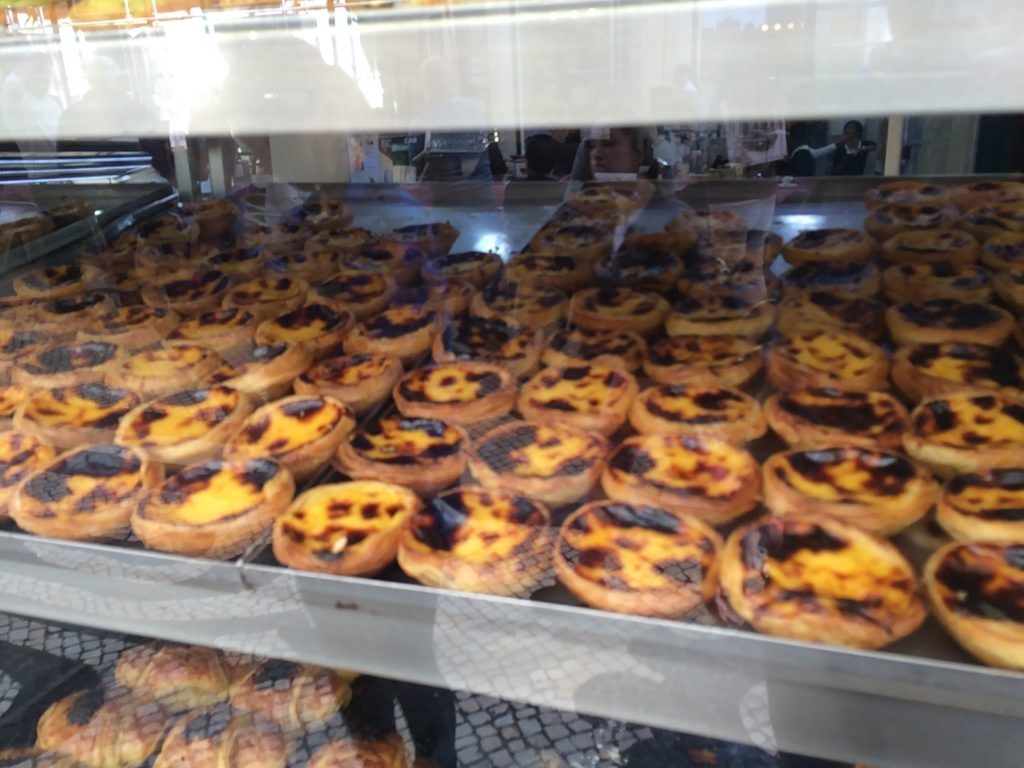
Belém is quaint and makes a great place for lunch as we discovered. Make sure you order yourself a fish pie, they are a specialty here. There are a couple of specialties in Lisbon that you have to try, yes wine is one but I do have a new love…. Portuguese Custard Tarts.
Café Pastéis de Belém is a cafe situated in Belem well-known as the original source of Portuguese Egg Tarts. TripAdvisor gives it a 5 out of 5 rating.
These egg tarts were created before the 18th century by Catholic monks at the Jerónimos Monastery. At the time, convents and monasteries used large quantities of egg-whites for starching of clothes, such as nuns’ habits. It was quite common for monasteries and convents to use the leftover egg yolks to make cakes and pastries, resulting in the proliferation of sweet pastry recipes throughout the country.
Following the extinction of the religious orders and in the face of the impending closing of many of the convents and monasteries in the aftermath of the Liberal Revolution of 1820, the monks started selling Portuguese egg tarts at a nearby sugar refinery to secure some revenue. In 1834 the monastery was closed and the recipe was sold to the sugar refinery, whose owners in 1837 opened the Cafe Pastéis de Belém. The descendents own the business to this day.
